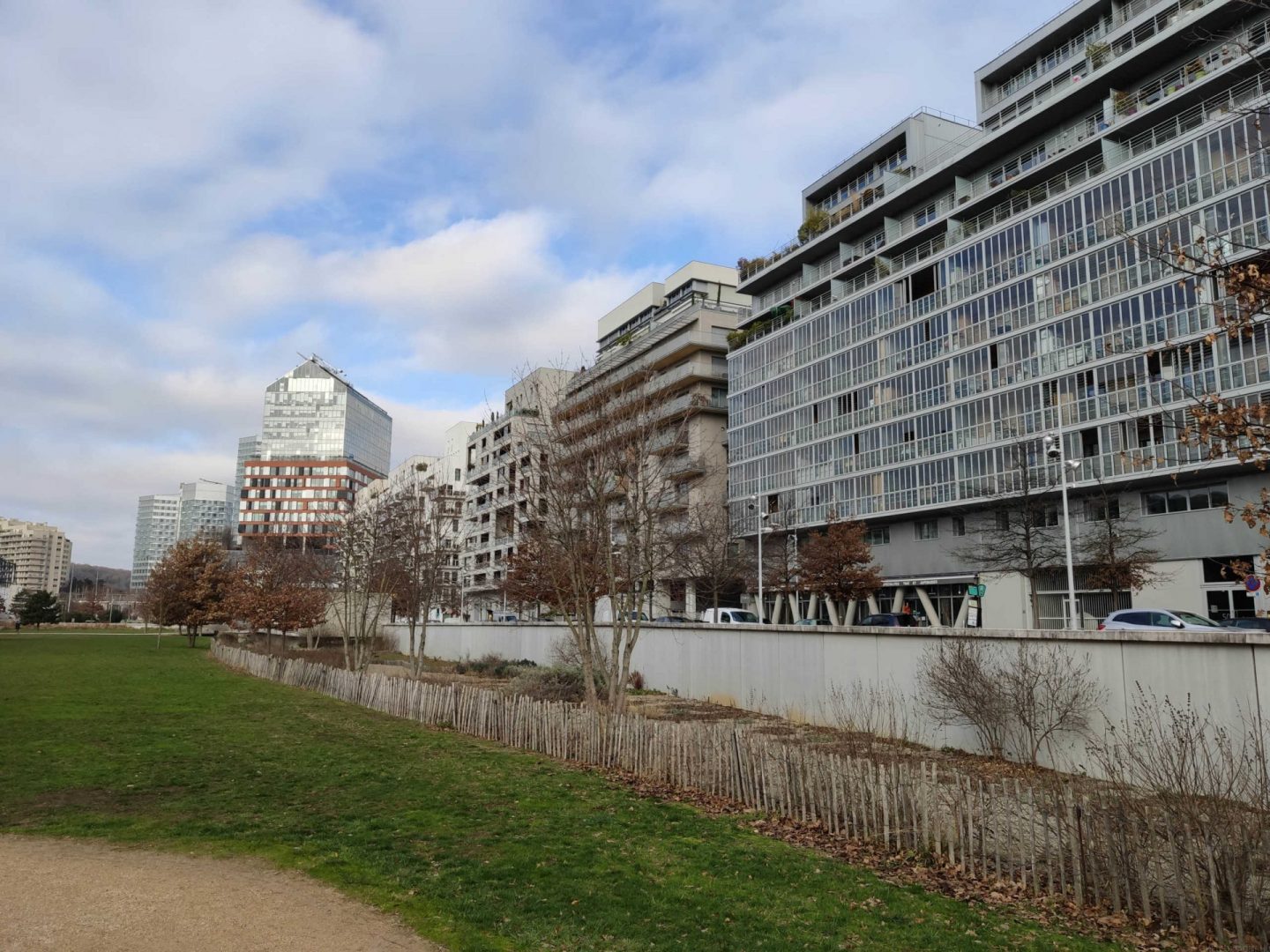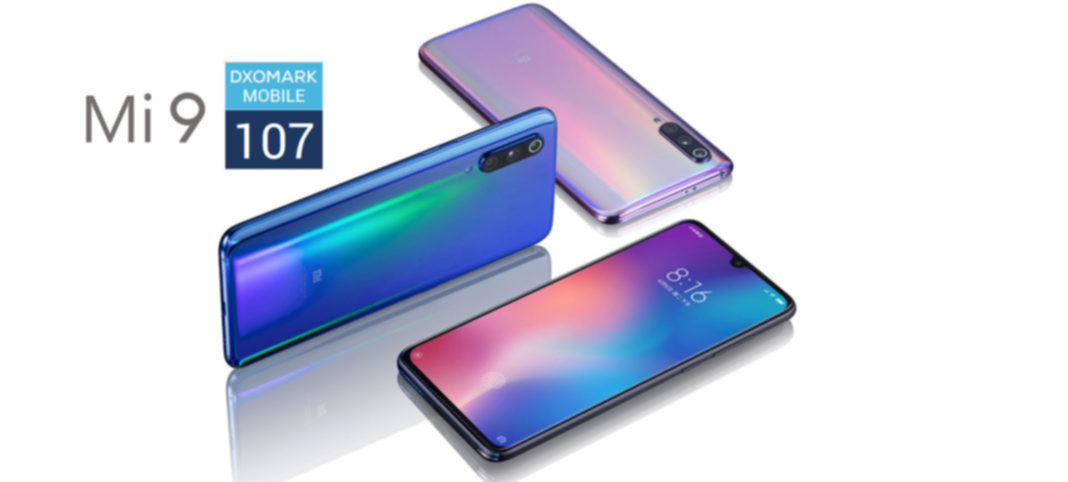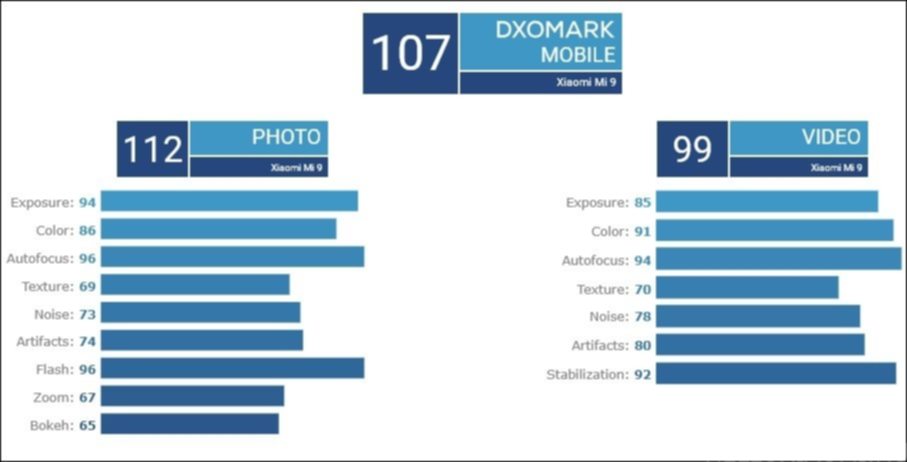Xiaomi is constantly improving the camera quality of its smartphones in both the mid-range and flagship categories. The improvement is so good that the Xiaomi Mi 9, launched yesterday according to the DXOMark test achieved a better result in photo, as the current Apple top model, the iPhone XS Max, and is just two points behind the Huawei Mate 20 Pro. But in video it's better than the P20/Mate 20 Pro.
About the test results before the Xiaomi Mi 9
The flagships (Mi 8/Pro, Mi MIX 2s, Mi MIX 3), we've already seen a huge improvement in camera quality over last year, while maintaining the affordable pricing that Xiaomi phones are known for. Released in March 2018 Mi MIX 2s 97 points obtained from the DXOMark benchmark which was the same score as the iPhone X. The Mi 8, released in May last year, showed further improvements in camera configuration, already scoring 98 points in the benchmark test, outperforming the iPhone X.
Unveiled last October Mi MIX 3 has already proudly announced (based on preliminary tests) that it has crossed 100 points, moving Xiaomi's current flagship into the Top 3 in the current field. The score achieved is 103 to be precise, just behind the Huawei Mate 20 Pro. This is an excellent result considering that Xiaomi has not teamed up with Leica, a renowned lens manufacturer with decades of experience in the (German) market - a famous name for those who know photography. Huawei's soar really took off when it created its first such co-developed smartphone.
Xiaomi Mi 9 vs Huawei P20
According to new Xiaomi Mi 9 similar to the Huawei P20 Pro with triple camera and is just 2 points behind the P20 Pro and Mate 20 Pro, making it one of the best smartphones with a camera. A Mate 20 Pro and P20 Pro score 109 on DXOMark test. It should be noted here that although DXO is testing the ability of selfie cameras, this has not yet been reported in the overall score.
 The Mi 9 is Xiaomi's first smartphone with three rear sensors. The three sensors are positioned vertically in the top left corner and are covered in sapphire glass for better protection.
The Mi 9 is Xiaomi's first smartphone with three rear sensors. The three sensors are positioned vertically in the top left corner and are covered in sapphire glass for better protection.
Key features of the Xiaomi Mi 9 camera
- Above the Phone sensor: 12MP 1/3.4-inch Samsung S5K3M5 sensor with 1.0µm pixels, f/2.2 aperture lens, 50mm focal length
- Alatta PDAF/laser autofocus
- In the middle is the Primary sensor: 48MP 1/2-inch Sony IMX586 quad sensor, 0.8 µm pixels, f/1.75 aperture (6P) lens, 26mm equivalent focal length
- And below the Super-wide-angle zoomr: 16MP 1/3-inch Sony IMX481 sensor, f/2.2 aperture lens, 17mm focal length (117° angle of view).
- the double (monochrome) LED flash is located separately under the camera unit
- Capture video at up to 2160p (4K) at 60fps (default mode 2160p / 30fps)
The main module captures image information on a 1/2″ 48 MP sensor that produces 12MP output images. Thanks to the 4-in-1 technology (also used in the Redmi Note 7), 4 pixels form a single main pixel. The amount of information and light captured is much better (more) than normal solutions.
The upper unit (tele-module) is the With a 12MP sensor for 2x zoom, the lower 16MP super-wide-angle sensor (117° angle) is responsible for panoramic landscapes and close-up (macro) photos.The autofocus system uses a mix of PDAF, laser and contrast detection. This is very rare, and the first time Xiaomi has supported all of these modes simultaneously.

After achieving a DxOMark Mobile average score of 107, the Mi 9 is the best Xiaomi device tested so far, with quality close to the current peak.The 112-point Photo score is excellent, thanks to the camera's ability to take high-quality stills in almost any situation.
 White balance is accurate and colours are pleasing.
White balance is accurate and colours are pleasing.
 The Xiaomi Mi 9 also produced good colour, exposure and noise levels indoors.
The Xiaomi Mi 9 also produced good colour, exposure and noise levels indoors.
Here are some comparison photos from the triple test!
High contrast
[twenty20 img1="14314″ img2="14318″ offset="0.5″ before="Xiaomi Mi 9″ after="iPhone XS Max"]
[twenty20 img1="14314″ img2="14310″ offset="0.5″ before="Xiaomi Mi 9″ after="Huawei Mate 20 Pro"]
In the dark, at 5 lux
[twenty20 img1="14332″ img2="14324″ offset="0.5″ before="Xiaomi Mi 9″ after="iPhone XS Max"]
[twenty20 img1="14332″ img2="14328″ offset="0.5″ before="Xiaomi Mi 9″ after="Huawei Mate 20 Pro"]
White balance
[twenty20 img1="14357″ img2="14349″ offset="0.5″ before="Mi 9″ after="XS Max"]
[twenty20 img1="14357″ img2="14353″ offset="0.5″ before="Mi 9″ after="Mate 20 Pro"]
Colour reproduction
[twenty20 img1="14345″ img2="14337″ offset="0.5″ before="Mi 9″ after="XS Max"]
[twenty20 img1="14345″ img2="14341″ offset="0.5″ before="Mi 9″ after="Mate 20 Pro"]
Drawing and noise filtering
Let's take a look at a picture of a large bowl, part of which has been inspected

 You guys show in quite some detail what level Xiaomi is at in 2019. The Xiaomi who, a few years ago, was criticised for its camera if you wanted advice on forums before buying. Today, that difference seems to be disappearing, as it's not just the top end that has improved so much in just under a year.
You guys show in quite some detail what level Xiaomi is at in 2019. The Xiaomi who, a few years ago, was criticised for its camera if you wanted advice on forums before buying. Today, that difference seems to be disappearing, as it's not just the top end that has improved so much in just under a year.
In a similar, though not as detailed, test I'll show you what the mid-range Xiaomi has to offer now. We'll see what the Redmi Note 7 can do when compared to a competing model in its category.
Source from
Detailed test of DxO you can find it here.



















